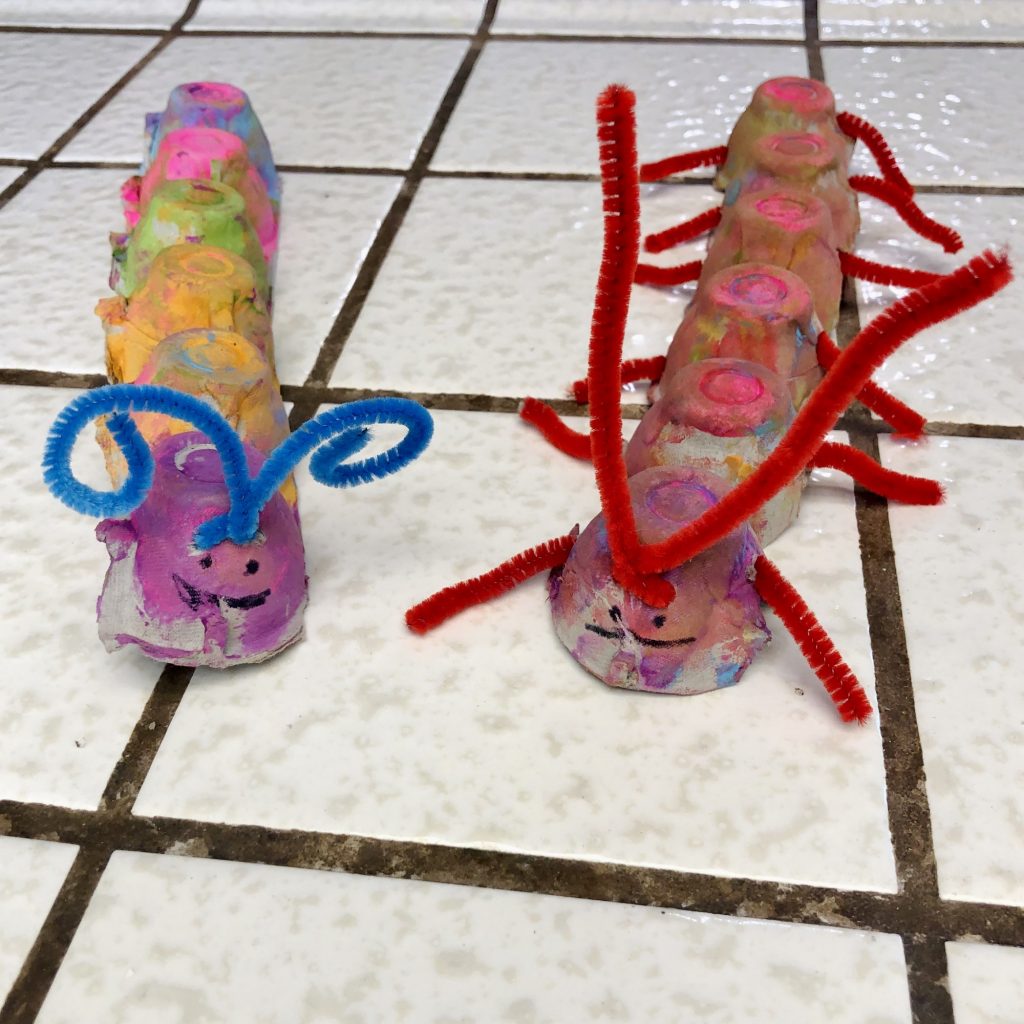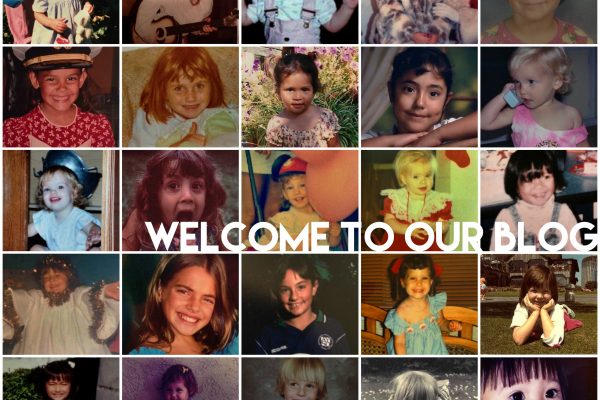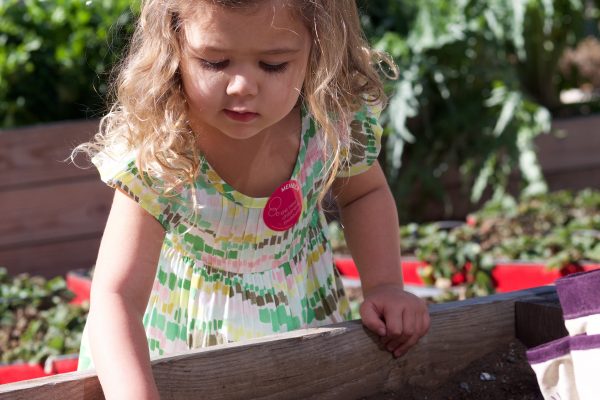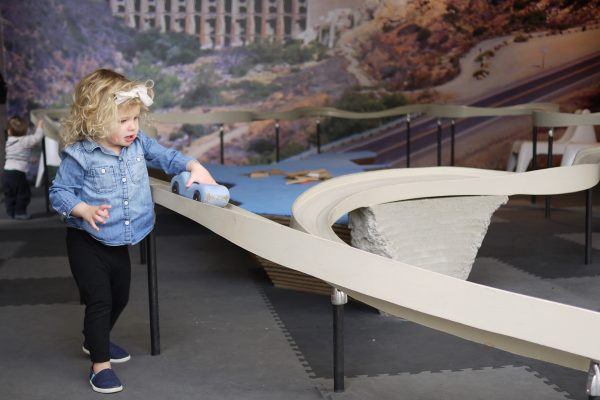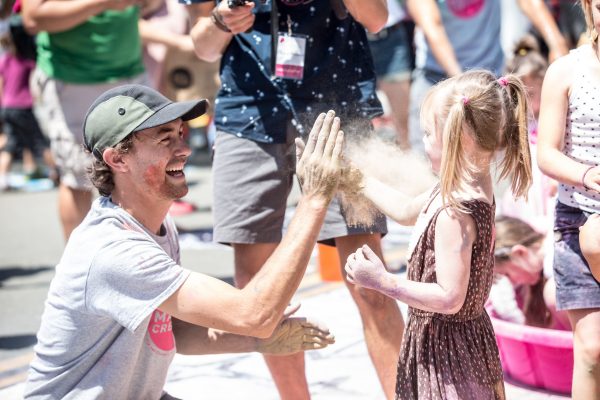Toddler Time at Home: Egg Carton Caterpillar
As part of our ScholarShare 529 Toddler Time at Home program, celebrate the classic story of The Very Hungry Caterpillar by Eric Carle while also exploring a creative project alongside your little one. Create artistic caterpillars together using egg cartons, paint and other craft materials. Finished caterpillars can be put on display or used for play!
Egg Carton Caterpillar Tutorial
AGE: 2+ years (with adult support)
TIME FRAME: 45 min
SUPPLIES:
- Copy of The Very Hungry Caterpillar by Eric Carle or view virtual reading
- 1 recycled paper or Styrofoam egg carton
- Scissors
- Paint, markers or crayons
- Colored pipe cleaners
- Googly eyes, glue, torn paper, etc. (optional)
directions
1. Read together. Begin by reading or viewing together the story of The Very Hungry Caterpillar by Eric Carle. Then gather all of your materials.
2. Create the caterpillar body. To create the egg carton caterpillars, first cut the egg carton so that the bottom tray remains and can then be cut and trimmed into two caterpillar-like shapes. Have your little one cover their caterpillar body with color using paint, markers or crayons.
3. Make the antennae and legs. Once dry, create two small holes in the top of the front egg carton bump of the caterpillar body and thread a pipe cleaner through it. Twist the pipe cleaner to make antennae. Let your little one explore different shapes or positions. Optional: Create holes on either side of the remaining egg carton bumps and use pipe cleaners (cut in half) to thread through and create legs. Use a marker or other materials to create a face and other features.
4. Name your caterpillar! Most little ones like to name their new “friends.” Encourage them to do so. Decide together if you are going to display your egg carton caterpillars, or you can use them for dramatic play to tell more stories!
Toddler to Transitional Kindergarten Learning Connections
Early learners (ages 2–5) enjoy storytelling and related activities like this one that allow them to connect with what they’ve heard and get creative at the same time. This activity is also a way for early learners to explore color, process and test outcomes. To further increase the learning opportunities, talk about the story you read while creating your Egg Carton Caterpillar together and consider exploring one or more of the additional activity ideas below.
Coffee Filter Butterflies
Further connect with the story of The Very Hungry Caterpillar by engaging your little one in more making! Create Coffee Filter Butterflies together using coffee filters, markers, a spray bottle and clothespin. Begin by laying a coffee filter or paper towel on top of a paper plate. Then, have your little one cover their filter/paper towel completely in marker colors and use a spray bottle to spritz the filter/paper towel with water until the colors bleed together. Once dry, accordion fold the filter/paper towel, pinch it in the middle and attach with a clothespin. Use other materials to add antennae, a face and other details to your butterfly!
Color Mixing
It’s never too early to teach your early learner about color and how colors are made. Talking about colors, pointing them out in their environment, using color names and exploring together with art materials on what happens when colors are combined are all great ways to introduce simple color theory to your early learner. If able, encourage them to point out the discoveries they are making.
Share a Story!
Reading is a wonderful vehicle for learning and for introducing new ideas to early learners. Select any engaging and age-appropriate books that explore insects and nature. Read them together with your child before or after the Egg Carton Caterpillar project.
Recommended Related Reading (Ages 2 – 5):
- Bugs, Bugs, Bugs! by Bob Barner
- Brian the Wildflower by Katie Ruiz
- The Backyard Bug Book for Kids by Lauren Davidson
- Outside Your Window: A First Book of Nature by Nicola Davies and illustrated by Mark Herald
Preschool Learning Foundations Standards (Visual Arts, Social Emotional Learning and Literacy)
Age 48 months:
- Create marks with crayons, paint and chalk and then identify them; mold and build with dough and clay and then identify them.
- Begin to recognize and name materials and tools used for visual arts.
- Enjoy learning and are confident in their abilities to make new discoveries although may not persist at solving difficult problems.
- Use language to construct short narratives that are real or fictional.
Age 60 months
- Begin to plan art and show increasing interest and persistence in completing it.
- Recognize and name materials and tools used for visual arts.
- Use language to construct extended narratives that are real or fictional.
